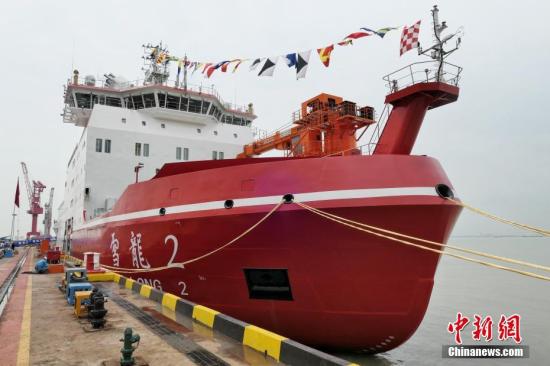Research to strengthen polar exploration capability in full swing
Scientists and engineers have been working on the research and development for the country's next-generation research icebreaker for years, expecting construction of the first such vessel to begin in the near future, according to a key figure involved in this project.
"The government has allocated considerable resources on the research and development of the heavy-duty research icebreaker. Its design work is being undertaken by our researchers and engineers on their own. Once it enters service, it will be capable of conducting long-duration missions in the Arctic and Antarctica and will allow our scientists to reach anywhere in the polar regions and stay as long as they wish," Wu Gang, a senior icebreaker designer from the Marine Design and Research Institute of China in Shanghai, told China Daily in an exclusive interview at the institute.
"Compared with existing models, the new type will be much stronger when it comes to capabilities of breaking ice and resisting extreme cold. It will be able to break ice with a thickness of more than two meters.
"It also will be highly intelligent and friendlier to the environment — it will use green fuels and will leave no pollutants during polar operations," he said.
According to Wu, major components on the new ship, including its engines, will be manufactured by Chinese companies.
"The heavy-duty icebreaker will join other ships to form an all-season polar research fleet and will extensively strengthen China's polar exploration capability," the designer said.
So far, China has four icebreakers — Xuelong (Snow Dragon), Xuelong 2, Jidi (Polar Region) and Sun Yatsen University Jidi, and all of them fall into the light — or mid-duty categories. They belong to the Ministry of Natural Resources, which runs the nation's polar expeditions.
Before the commissioning of Xuelong 2 in July 2019, China only operated a single icebreaker — Xuelong — which was designed for cargo transportation rather than scientific research operations when it was built in Ukraine in 1993. Xuelong was purchased by China and converted into a polar research and resupply vessel. It has carried out dozens of scientific expeditions to the Arctic and Antarctic.
The latest addition to the country's polar fleet is Jidi, which was delivered to its user, the Ministry of Natural Resources' North Sea Bureau in Qingdao, Shandong province, in June.
Designed by Wu's institute, Jidi can break through ice up to one meter thick. The ship is approximately 90 meters long and 17.8 meters wide, and can displace 5,700 metric tons of water. It has a cruising speed of 15 knots or 27.8 kilometers per hour, and can sail about 26,000 km in a single voyage.
Jidi can accommodate a crew of 60 for missions lasting up to 80 days without requiring resupply.

